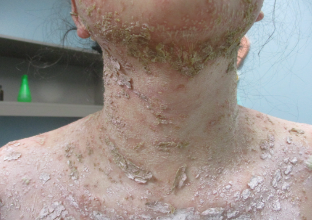Presenter: Risa Gorin, DO
Dermatology Program: St. Barnabas Hospital Dermatology Department, Bronx, New York
Program Director: Cindy Hoffman, D.O.
Submitted on: September 30, 2007
CHIEF COMPLAINT: Persistent rash on proximal extremities
CLINICAL HISTORY: A 19 yr old Hispanic male with a seven-year history of a persistent rash presented to our clinic. The lesions began on his proximal extremities and increased in number and size over time. The lesions began one year after allogeneic bone marrow transplant for acute myelogenous leukemia. However, he stated that he was not taking any immunosuppressants when the rash started. The lesions were occasionally pruritic and unresponsive to super-high potency topical steroids. Family history was non-contributory. Patient was not taking any medications at the time of presentation to our office.
PHYSICAL EXAM:
Five discrete round plaques with central clearing and a peripheral keratotic ridge, ranging in size from 1.5 cm to 3.0 cm, on the extremities, were identified. Four similar lesions ere identified on the shaft of the penis and two hyperpigmented prurigo-like nodules were on his abdomen and right hand. Palms and soles were spared.
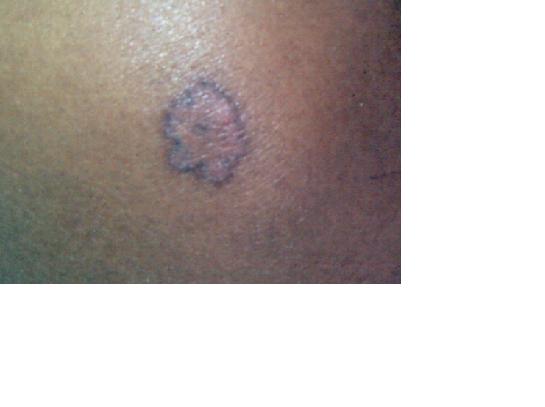
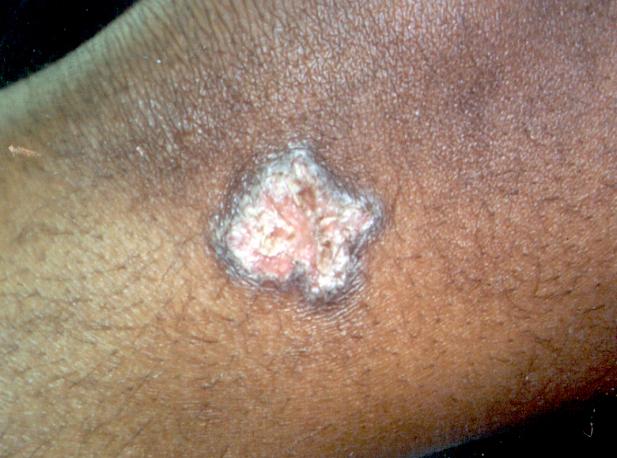
LABORATORY TESTS: N/A
DERMATOHISTOPATHOLOGY:
Within the cornified layer, an elongated column of parakeratosis coming off the epidermis at a forty-five-degree angle is seen. Underneath the column of parakeratosis, there is an absent granular layer, and focally, dyskeratotic and large keratinocytes with hyperchromatic nuclei are present. The epidermis shows uniform, mild psoriasiform hyperplasia. Within the dermis, there is a superficial perivascular lymphohistiocytic infiltrate.
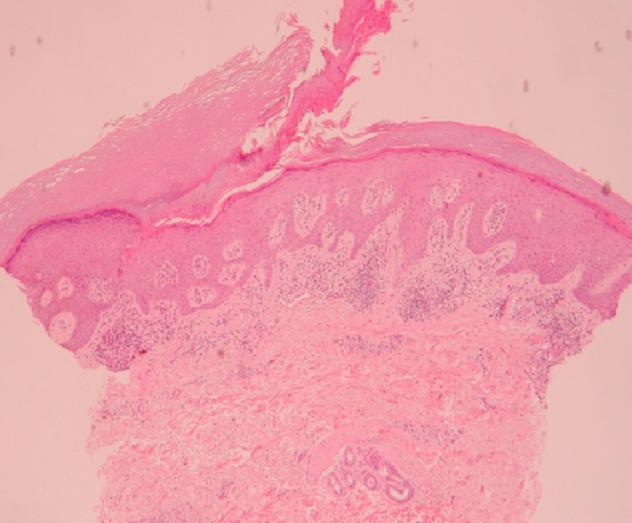
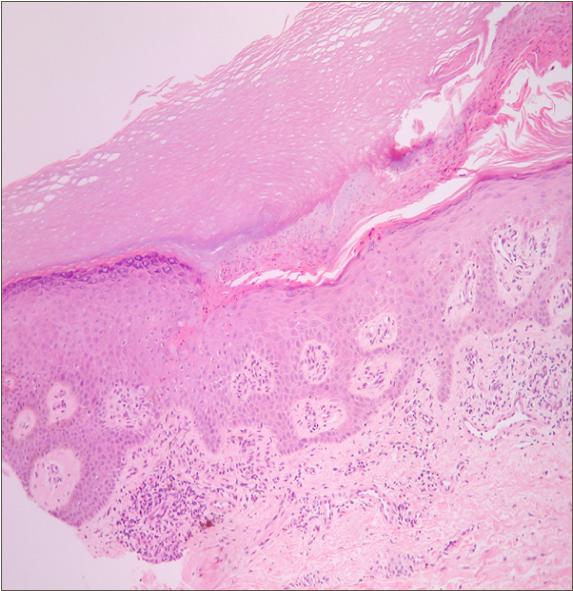
DIFFERENTIAL DIAGNOSIS:
1. Graft vs Host Disease
2. Disseminated Superficial Porokeratosis
3. Porokeratosis of Mibelli
4. Acrokeratosis Verruciformis
5. Elastosis Perforans Serpiginosa



